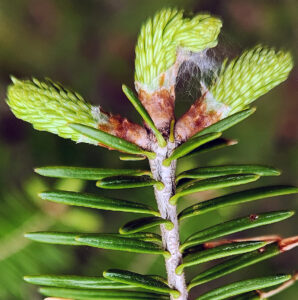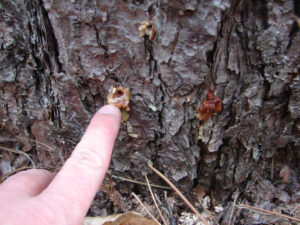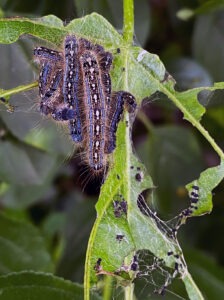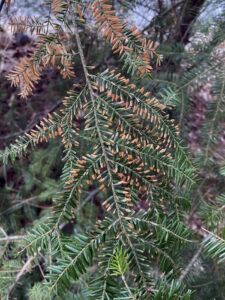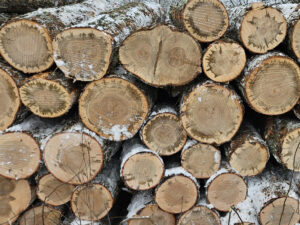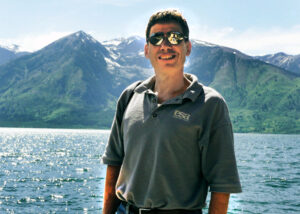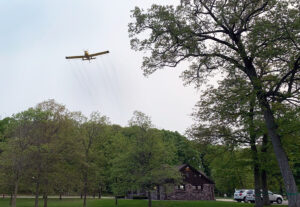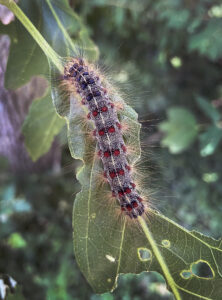
An oak tree (center) that died rapidly from oak wilt during the summer of 2024. / Photo Credit: Wisconsin DNR
By Michael Hillstrom, Wisconsin DNR Forest Health Specialist
Michael.Hillstrom@wisconsin.gov or 608-513-7690
Oak wilt symptoms typically begin to appear in southern Wisconsin in late June and in northern Wisconsin during July.
Watch for browning leaves, starting at the top of the canopy and progressing downward. Most leaves will fall from infected trees as they die, typically within two to four weeks.

